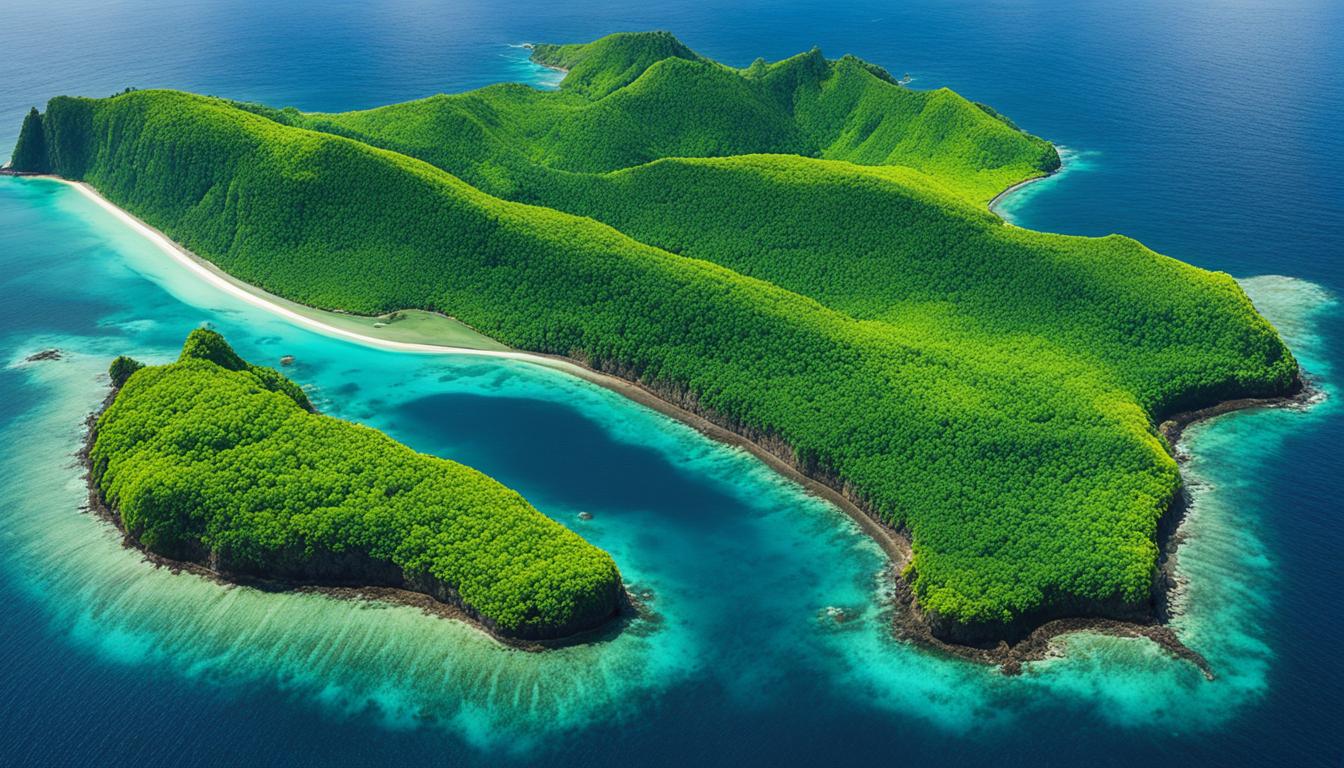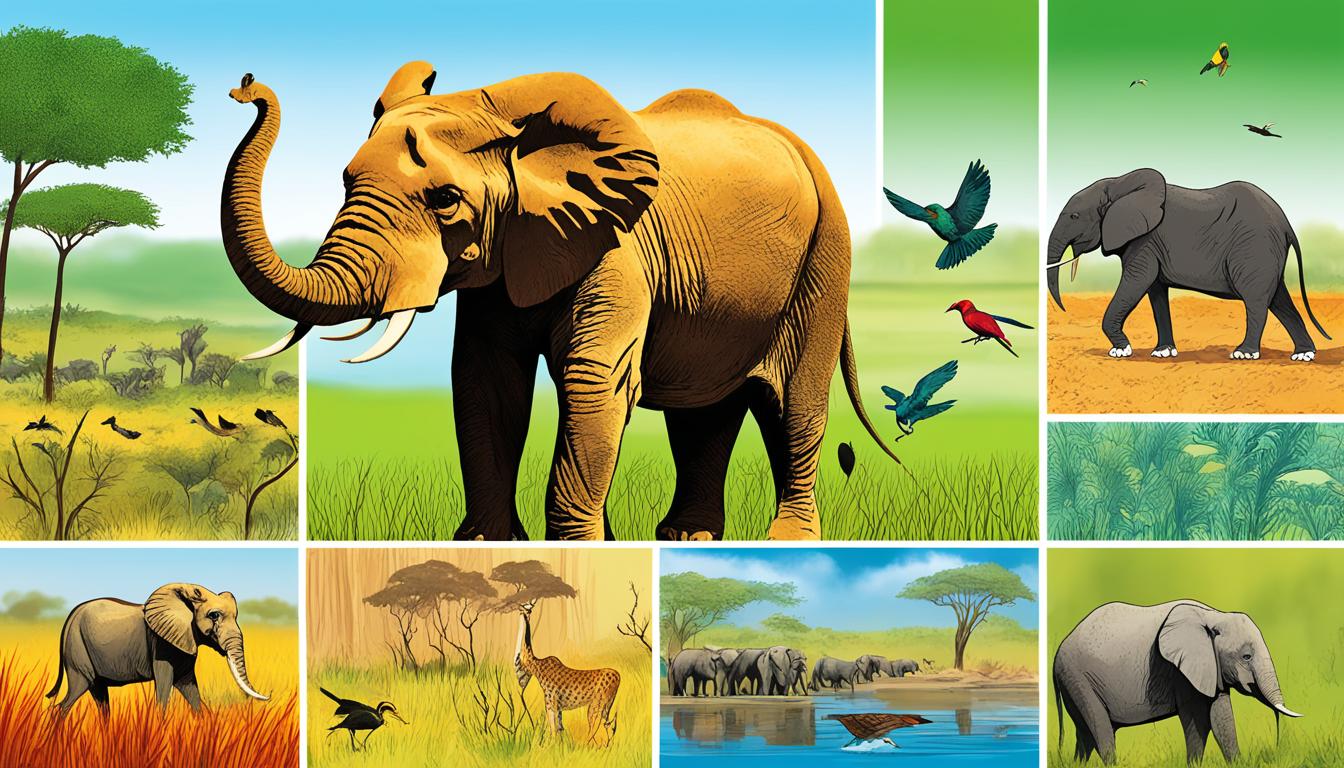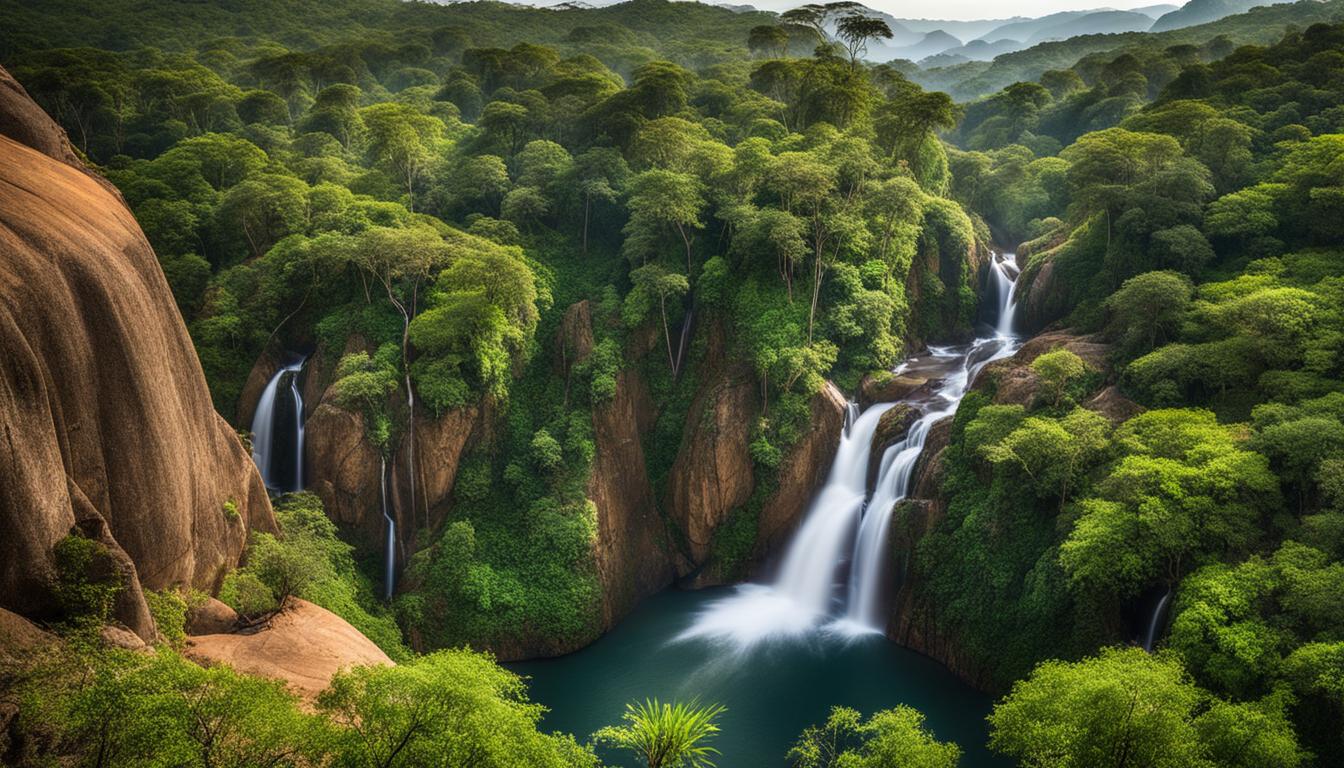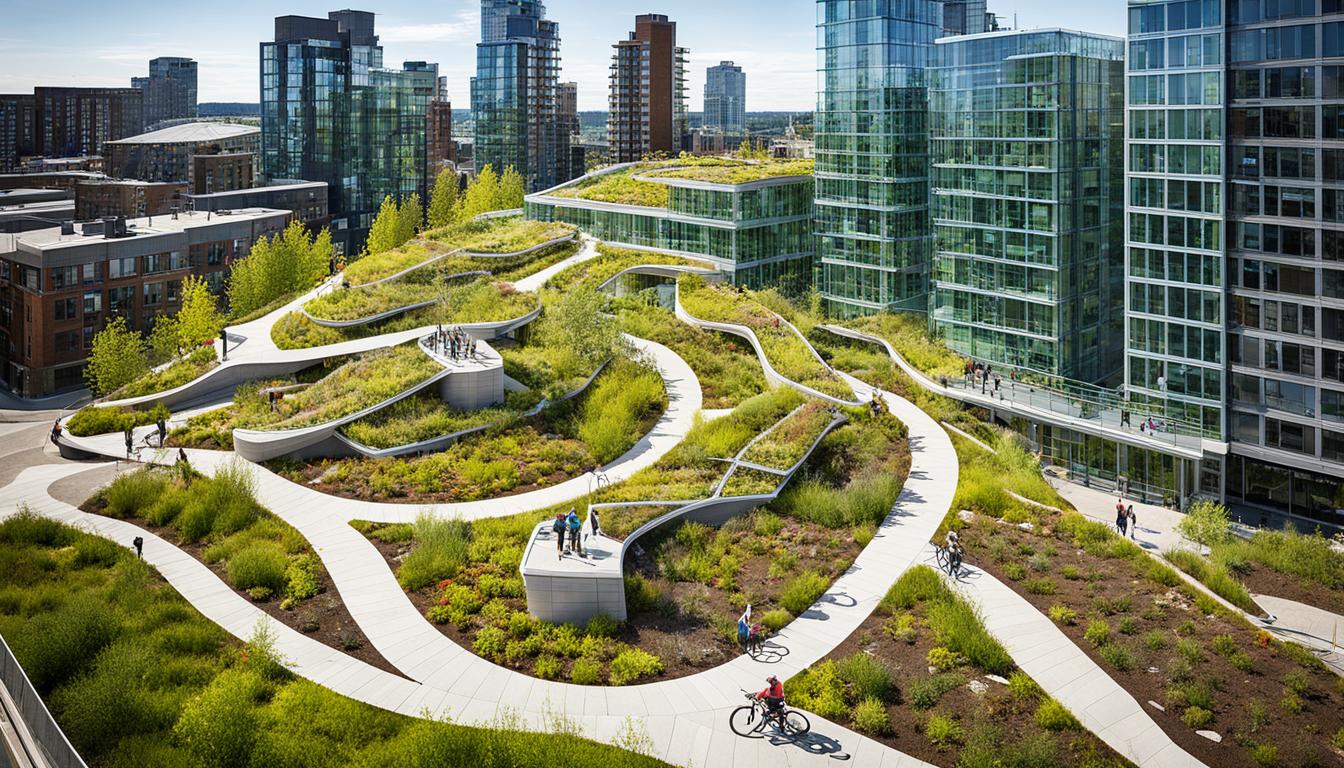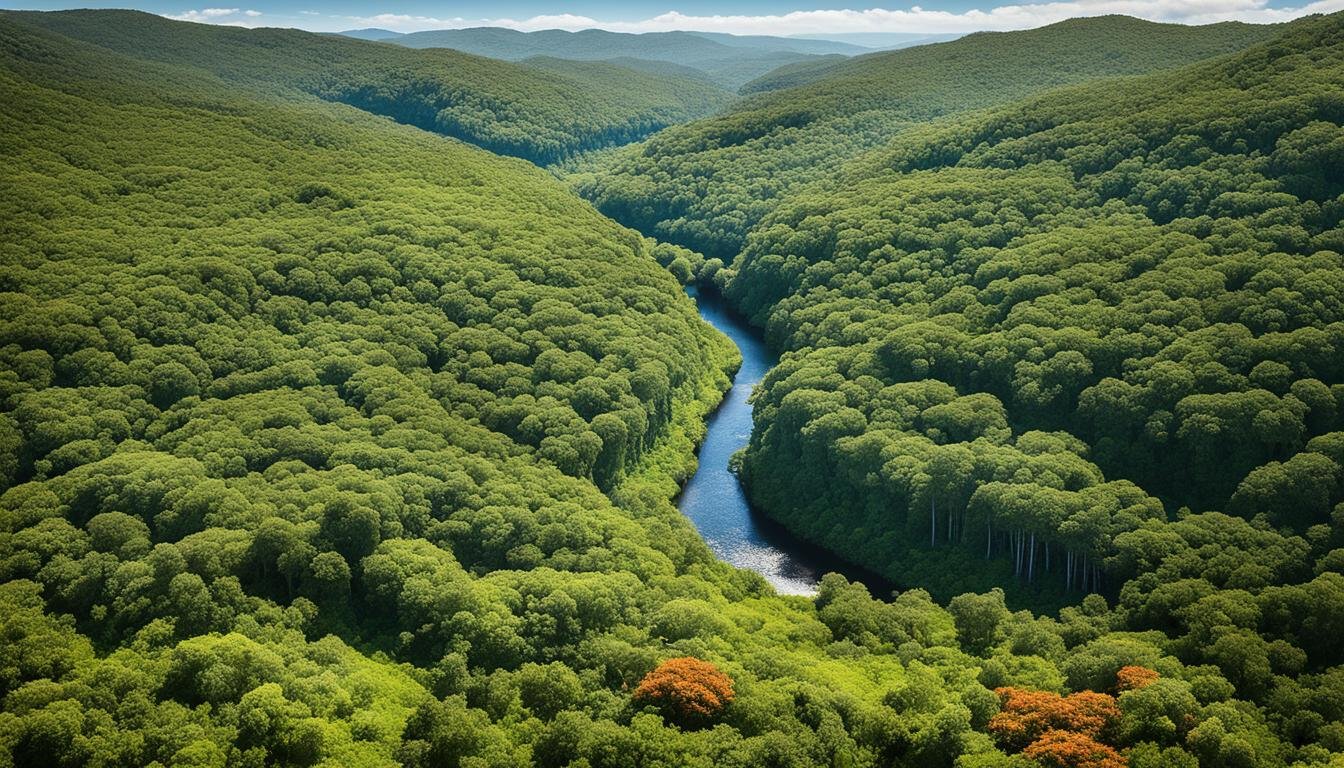Saudi Arabia Biodiversity: Animal and Plant Species and What Is Under Threat
Did you know that Saudi Arabia, with its vast expanse of 1,969,000 km2, is home to a remarkable diversity of animal and plant species? This Middle Eastern country boasts 2,250 species of flowering plants, including 246 that are found nowhere else in the region. The wildlife in Saudi Arabia is equally impressive, with 93 mammal species, 432 bird species, 9 freshwater fish species, 103 reptiles, and 7 amphibians. However, this rich biodiversity is facing significant threats.
Conservation in Saudi Arabia is of paramount importance, as habitat destruction and fragmentation, over-grazing, over-hunting, pollution, and the expansion of urban areas pose serious risks to the ecosystems and species that call this country home. In this article, we will explore the biodiversity of Saudi Arabia, the specific threats it faces, the ongoing conservation efforts, and the importance of preserving this natural heritage for future generations.
Key Takeaways:
- Saudi Arabia is home to a diverse range of animal and plant species
- The country faces threats such as habitat destruction, over-grazing, and over-hunting
- Conservation efforts are crucial to protect Saudi Arabia’s biodiversity
- Saudi Arabia has established protected areas and implemented a National Biodiversity Strategy and Action Plan
- Public awareness and active participation are essential for successful biodiversity conservation
Flora of Saudi Arabia
Saudi Arabia is home to a diverse array of plant life, boasting a rich flora that includes approximately 2,250 species of flowering plants. Among these, there are 246 regionally endemic species that are exclusive to the country. This remarkable botanical diversity plays a crucial role in the country’s ecosystems, providing essential ecological services and contributing to the overall well-being of the environment.
The flowering plants in Saudi Arabia exhibit a plethora of forms, colors, and adaptations, reflecting the diverse range of habitats found throughout the country. From the arid deserts to the mountainous regions, each ecosystem harbors its own unique assemblage of plant species. These plants not only enhance the aesthetics of the landscape but also serve as valuable resources for humans.
Medicinal plants are among the valuable flora found in Saudi Arabia, with many traditional remedies relying on their therapeutic properties. These plants offer a source of natural medicinal compounds that have been used for centuries to treat various ailments. By preserving the flora of Saudi Arabia, we can continue to benefit from the immense medicinal value they offer.
Unfortunately, the flora of Saudi Arabia faces significant threats from human activities. Habitat destruction, primarily due to urban expansion, poses a severe risk to the survival of many plant species. Over-grazing by livestock and changes to agricultural practices also contribute to the degradation of plant habitats.
“The rich diversity of flora in Saudi Arabia is a testament to the country’s unique ecological heritage. It is our collective responsibility to protect and preserve this invaluable natural resource for future generations.” – Dr. Ali Al-Zahrani, Environmental Scientist
Biodiversity Hotspots in Saudi Arabia
Within Saudi Arabia, there are several biodiversity hotspots where the concentration of endemic and endangered plant species is particularly high. These hotspots include mountainous regions, wetlands, and coral reefs. Protecting these areas is crucial for safeguarding the unique plant life that is found exclusively within their boundaries.
To illustrate the remarkable flora of Saudi Arabia, here is a table listing some notable species:
| Flowering Plant | Scientific Name | Status |
|---|---|---|
| Rose of Jericho | Anastatica hierochuntica | Endemic |
| Arabian Balsam | Commiphora gileadensis | Endangered |
| Date Palm | Phoenix dactylifera | Cultivated |
| Arabian Jasmine | Jasminum sambac | Native |
https://www.youtube.com/watch?v=lZ1z3k7m8AM
By recognizing the significance of the flora of Saudi Arabia and taking proactive conservation measures, we can ensure the protection of these invaluable plant species. Preserving the floral diversity not only enhances the beauty of the Saudi Arabian landscape but also promotes a sustainable and harmonious coexistence with nature.
Fauna of Saudi Arabia
Saudi Arabia boasts rich biodiversity, with a diverse array of fauna that contributes to the country’s ecological balance. The fauna of Saudi Arabia encompasses various species, including:
- 93 mammal species
- 432 bird species
- 9 freshwater fish species
- 103 reptiles
- 7 amphibians
These remarkable creatures play vital roles in maintaining the country’s ecosystems and contribute to the overall biodiversity. Each species occupies a unique niche, forming intricate food webs and ecological relationships.
However, the fauna of Saudi Arabia faces several threats that endanger their survival:
- Habitat Destruction: The destruction of natural habitats, such as forests and wetlands, limits the available space for wildlife.
- Over-Hunting: Unsustainable hunting practices negatively impact animal populations, disrupting natural balances.
- Invasive Species: The introduction of invasive species can outcompete native fauna, leading to their decline.
To illustrate the rich fauna of Saudi Arabia, here’s a visual representation of some iconic species:
| Mammals | Birds | Reptiles |
|---|---|---|
| Lion | Arabian Woodpecker | Arabian Spiny-tailed Lizard |
| Gazelle | Arabian Oryx | Desert Monitor |
| Caracal | Sandgrouse | Arabian Horned Viper |
These fascinating species represent a small fraction of the diverse fauna you can find in Saudi Arabia.
It is crucial to raise awareness about the importance of conserving Saudi Arabia’s biodiversity. By protecting and preserving these unique creatures and their habitats, we can ensure their survival for generations to come.

Protected Areas in Saudi Arabia
Saudi Arabia recognizes the importance of preserving its rich biodiversity and has established 15 protected areas across the country. These protected areas cover almost 4% of Saudi Arabia’s surface, safeguarding diverse habitats that are home to a wide range of plant and animal species.
These protected areas serve as invaluable refuges for endemic, endangered, and key species, promoting their survival and contributing to the overall conservation efforts in Saudi Arabia. The preservation of these habitats is crucial for maintaining healthy ecosystems and ensuring the long-term sustainability of the country’s biodiversity.
The 15 protected areas in Saudi Arabia encompass a variety of habitats, including majestic mountains, pristine wetlands, and biodiverse marine habitats. Each of these protected areas plays a vital role in maintaining the balance of ecosystems and providing essential habitats for numerous species.
| Name | Area (km2) | Habitat Type | Key Species |
|---|---|---|---|
| Muzahmiyya Nature Reserve | 700 | Mountainous | Arabian leopard, Arabian wolf |
| Asir National Park | 1,327 | Mountainous | Arabian tahr, Arabian red fox |
| Uruq Bani Ma’arid Wildlife Sanctuary | 9,235 | Desert | Arabian oryx, Arabian sand gazelle |
| Farasan Islands Protected Area | 5,000 | Marine and Coastal | Hawksbill turtle, dugong |
These protected areas not only offer sanctuary to iconic species like the Arabian leopard, Arabian oryx, and hawksbill turtle but also provide valuable opportunities for scientific research and ecotourism. Visitors to these areas can witness the beauty of Saudi Arabia’s natural landscapes and learn about the importance of conservation.
“Protected areas are crucial for preserving the incredible biodiversity of Saudi Arabia. They serve as sanctuaries for endangered species and allow us to maintain the delicate balance of our unique ecosystems.” – Dr. Ahmed Al-Abdulrhim, Director of the Saudi Wildlife Authority
While the establishment of these protected areas is commendable, there is still a need for further expansion to cover more diverse habitats and protect additional species. Efforts are underway to identify and designate new areas as protected, ensuring the conservation of Saudi Arabia’s exceptional biodiversity for future generations.
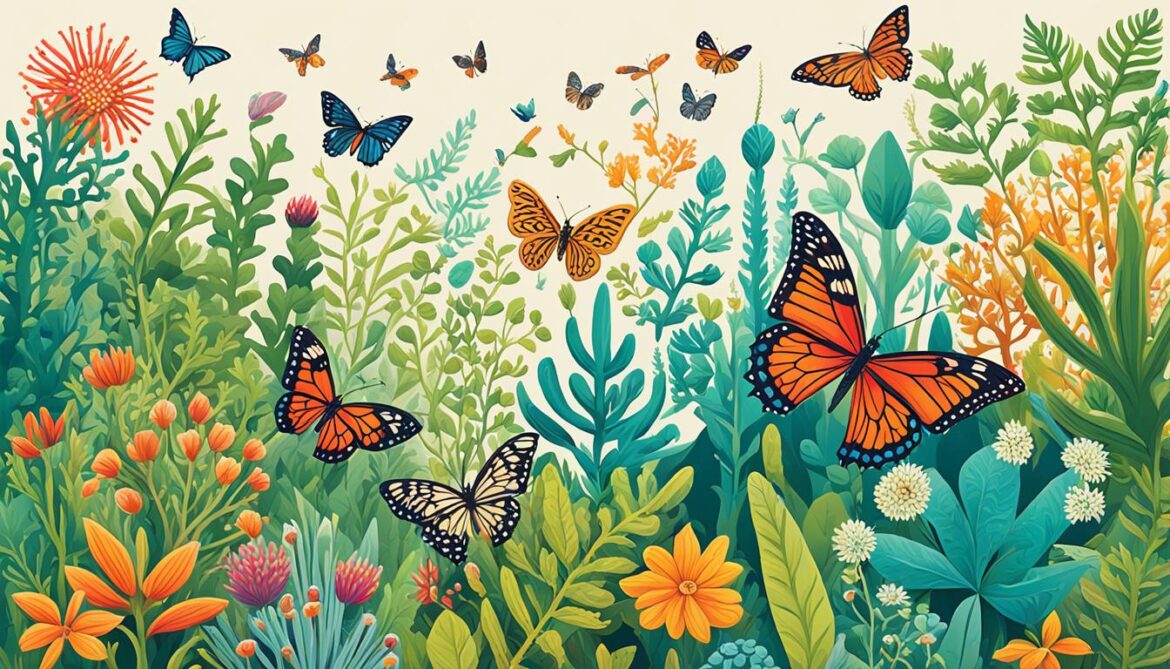
By preserving and expanding these protected areas, Saudi Arabia is demonstrating its commitment to biodiversity conservation and sustainable development, recognizing the intrinsic value of its natural heritage.
Threats to Biodiversity in Saudi Arabia
Biodiversity in Saudi Arabia is under significant threat from various activities that have detrimental effects on ecosystems and wildlife populations. These threats include:
- Habitat Destruction and Fragmentation: The rapid expansion of human activities, such as agriculture, infrastructure development, and urbanization, has led to the destruction and fragmentation of natural habitats. This loss of habitat directly impacts species that rely on specific ecosystems for survival.
- Over-grazing: Unsustainable grazing practices, particularly in arid and semi-arid regions of Saudi Arabia, have resulted in the degradation of vegetation and soil erosion. Over-grazing reduces food availability for wildlife, disrupts the natural balance of ecosystems, and degrades the quality of grazing lands.
- Over-hunting: The excessive hunting of native species, both for subsistence and recreational purposes, has led to population declines and even extinctions. Over-hunting disrupts the natural predator-prey dynamics and negatively affects the biodiversity of Saudi Arabia.
- Pollution: Industrialization and urbanization have contributed to pollution of land, air, and water in Saudi Arabia. The release of toxic chemicals, pollutants, and waste products into the environment has severe consequences for both terrestrial and aquatic species, leading to decreased biodiversity.
- Urban Expansion: The rapid expansion of urban areas and infrastructure development encroaches upon natural habitats, resulting in habitat destruction, loss of biodiversity, and further fragmentation of ecosystems. The conversion of natural landscapes into concrete jungles disrupts the delicate balance and functioning of ecosystems.
- Introduction of Invasive Species: The introduction of non-native species to Saudi Arabia can have devastating effects on native flora and fauna. Invasive species outcompete native species for resources, disrupt natural ecological processes, and can result in the decline or even extinction of indigenous species.
These threats pose serious challenges to the conservation of Saudi Arabia’s unique biodiversity. Urgent action is required to mitigate these threats and ensure the long-term survival of diverse plant and animal species.
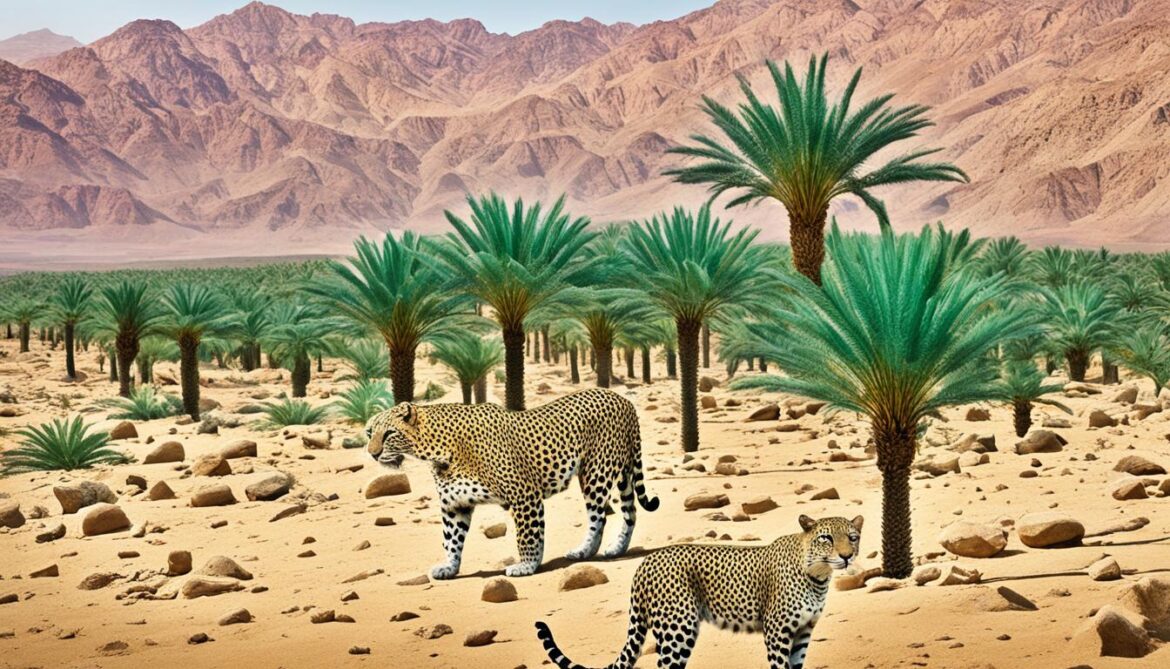
Impact of Threats on Biodiversity
The combined impact of habitat destruction, over-grazing, over-hunting, pollution, urban expansion, and invasive species has far-reaching consequences for Saudi Arabia’s biodiversity. It disrupts the delicate balance of ecosystems, leads to the loss of valuable habitat and native species, and jeopardizes the functioning of entire ecosystems.
| Threats | Impact on Biodiversity |
|---|---|
| Habitat Destruction and Fragmentation | Destruction of natural habitats, loss of biodiversity, displacement of species, and disruption of ecological processes |
| Over-grazing | Degradation of vegetation, soil erosion, food scarcity for wildlife, and loss of habitat quality |
| Over-hunting | Population decline and extinction of species, disruption of predator-prey dynamics, and loss of biodiversity |
| Pollution | Contamination of land, air, and water, detrimental effects on terrestrial and aquatic species, and reduced biodiversity |
| Urban Expansion | Habitat destruction, loss of biodiversity, fragmentation of ecosystems, and disruption of ecological balance |
| Introduction of Invasive Species | Competition with native species, disruption of ecological processes, and decline or extinction of indigenous species |
Addressing these threats requires collective efforts in implementing sustainable practices, promoting conservation awareness, and strengthening environmental regulations in Saudi Arabia. Only through proactive measures can the country preserve its rich biodiversity and safeguard the future of its unique ecosystems.
Conservation Efforts in Saudi Arabia
Saudi Arabia is actively involved in the conservation of its rich biodiversity. The country has implemented various strategies to protect and sustainably manage its natural resources. These efforts encompass both in-situ and ex-situ conservation, focusing on diverse ecosystems such as forests, woodlands, desert rangelands, and marine habitats. Through the conservation and development of these areas, Saudi Arabia aims to safeguard its unique wildlife and plant species.
To support these conservation endeavors, Saudi Arabia has established environmental legislation to regulate activities that may pose a threat to biodiversity. Scientific research plays a crucial role in understanding ecosystems and informing conservation strategies. Additionally, the country emphasizes environmental education to raise awareness and promote a culture of environmental protection among its citizens.
Despite these efforts, there is a need for enhanced collaborative management to ensure the long-term success of conservation initiatives. By fostering cooperation among government agencies, non-governmental organizations, communities, and other stakeholders, Saudi Arabia can effectively address conservation challenges and protect its natural heritage for future generations.
Furthermore, nature-based tourism presents an opportunity to engage visitors and generate support for biodiversity conservation. By showcasing the country’s unique flora and fauna, Saudi Arabia can raise public awareness about the importance of environmental protection and encourage sustainable tourism practices.
Through its comprehensive approach to conservation, Saudi Arabia is actively working towards preserving its biodiversity and ensuring a sustainable future for its natural resources.
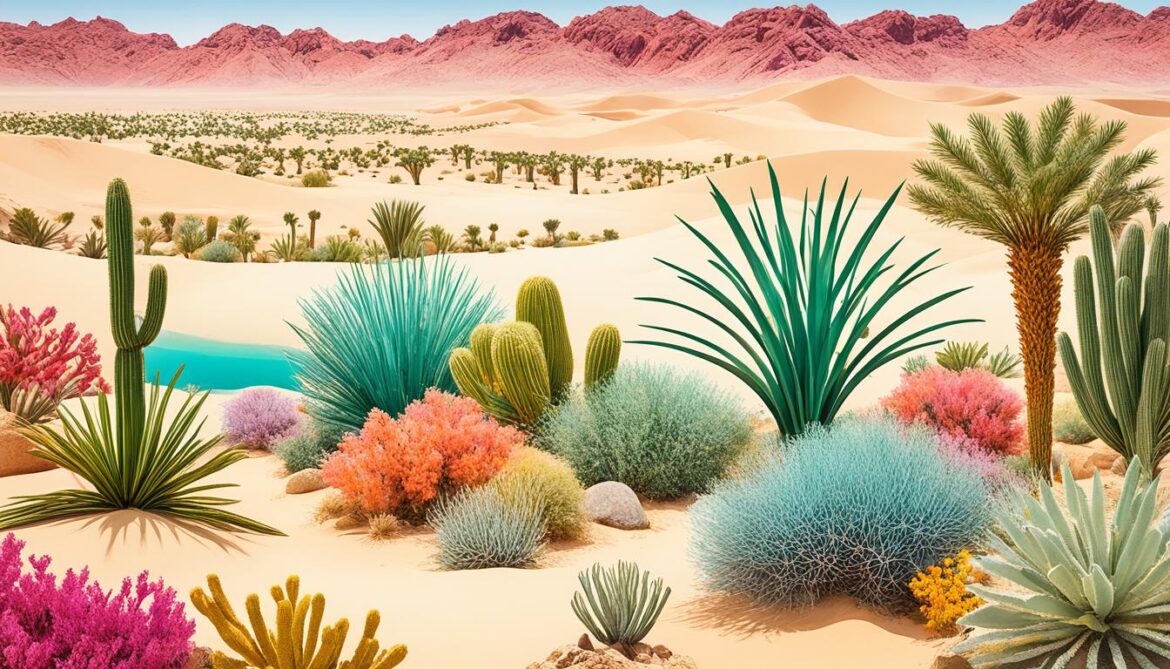
Quotes:
“Conservation is not solely the responsibility of governments or organizations; it requires individual and collective actions. Together, we can protect Saudi Arabia’s biodiversity and secure a better future for our planet.” – Dr. Abdullah Al-Dabbagh, Saudi Environmental Society
The Benefits of Conservation Efforts:
- Promote the sustainability of ecosystems and protect fragile habitats
- Safeguard endangered and endemic species
- Preserve genetic diversity and the potential for future scientific discoveries
- Maintain ecosystem services, such as pollination and water purification
- Contribute to sustainable development and economic growth through nature-based tourism
Biodiversity Hotspots in Saudi Arabia
Saudi Arabia is blessed with several extraordinary biodiversity hotspots, showcasing a rich variety of endemic and endangered species. These hotspots encompass diverse ecosystems, including mountainous regions, wetlands, and coral reefs. The conservation of these hotspots is of utmost importance in safeguarding the unique plant and animal species that can only be found within these areas.
Efforts to protect these hotspots require a multi-faceted approach, including habitat restoration, stringent protection from human activities, and a concerted effort to raise awareness and encourage public participation in conservation initiatives.
By focusing on the preservation and sustainable management of these biodiversity hotspots, Saudi Arabia can play a crucial role in safeguarding its natural heritage and ensuring the long-term survival of endemic and endangered species.
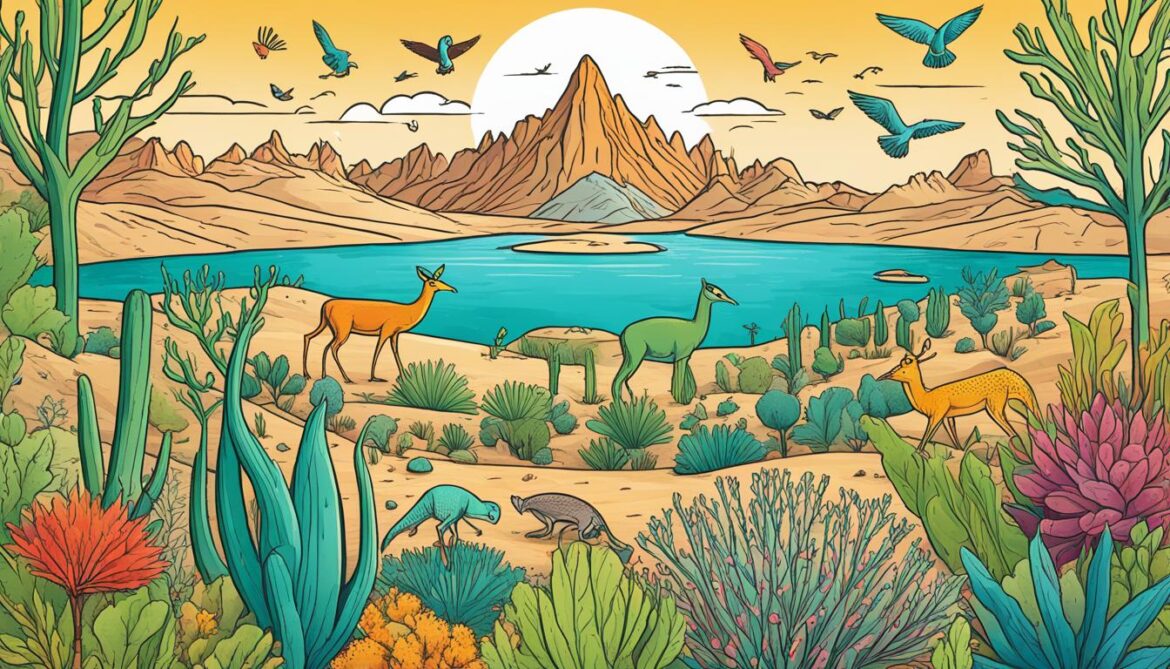
National Biodiversity Strategy and Action Plan in Saudi Arabia
Saudi Arabia recognizes the importance of conserving its rich biodiversity and has developed a comprehensive National Biodiversity Strategy and Action Plan. This plan aims to promote the conservation and sustainable use of biodiversity throughout the country. The strategy addresses various aspects of biodiversity conservation, including:
In-Situ and Ex-Situ Conservation
The National Biodiversity Strategy and Action Plan emphasizes the need for both in-situ and ex-situ conservation efforts. In-situ conservation involves preserving biodiversity within its natural habitats, such as protected areas and national parks. Ex-situ conservation, on the other hand, focuses on safeguarding biodiversity outside of its natural habitats through activities like captive breeding programs and seed banks.
Forest and Woodland Conservation
Recognizing the importance of forests and woodlands for biodiversity, the plan highlights the need for their conservation. Forests and woodlands provide habitats for a wide range of plant and animal species and play a crucial role in maintaining ecological balance.
Regulation of Access to Genetic Resources
The National Biodiversity Strategy and Action Plan also addresses the regulation of access to genetic resources. Genetic resources are valuable assets for research and development, and their sustainable use must be ensured while protecting the rights of communities and indigenous peoples.
Environmental Legislation
To effectively conserve biodiversity, the plan emphasizes the importance of implementing environmental legislation. This includes establishing laws and regulations to protect threatened species, habitats, and ecosystems.
Scientific Research
Scientific research plays a vital role in understanding biodiversity and developing effective conservation strategies. The National Biodiversity Strategy and Action Plan encourages the support and promotion of scientific research on Saudi Arabia’s biodiversity.
Environmental Education
Creating awareness and educating the public about the value of biodiversity is crucial for its conservation. The plan emphasizes the need for environmental education programs to engage communities and instill a sense of responsibility towards biodiversity conservation.
Socio-Economic Development
The National Biodiversity Strategy and Action Plan recognizes the importance of integrating biodiversity conservation into socio-economic development plans. It emphasizes the sustainable use of biodiversity to promote economic growth while ensuring the long-term protection of Saudi Arabia’s natural heritage.
Collaboration for Biodiversity
Conserving biodiversity requires the collective efforts of government agencies, non-governmental organizations, scientific institutions, and local stakeholders. The plan promotes collaboration and cooperation among these entities to achieve the goals of the National Biodiversity Strategy and Action Plan.
By implementing this comprehensive strategy and action plan, Saudi Arabia is committed to protecting its biodiversity and ensuring its sustainable use for future generations.
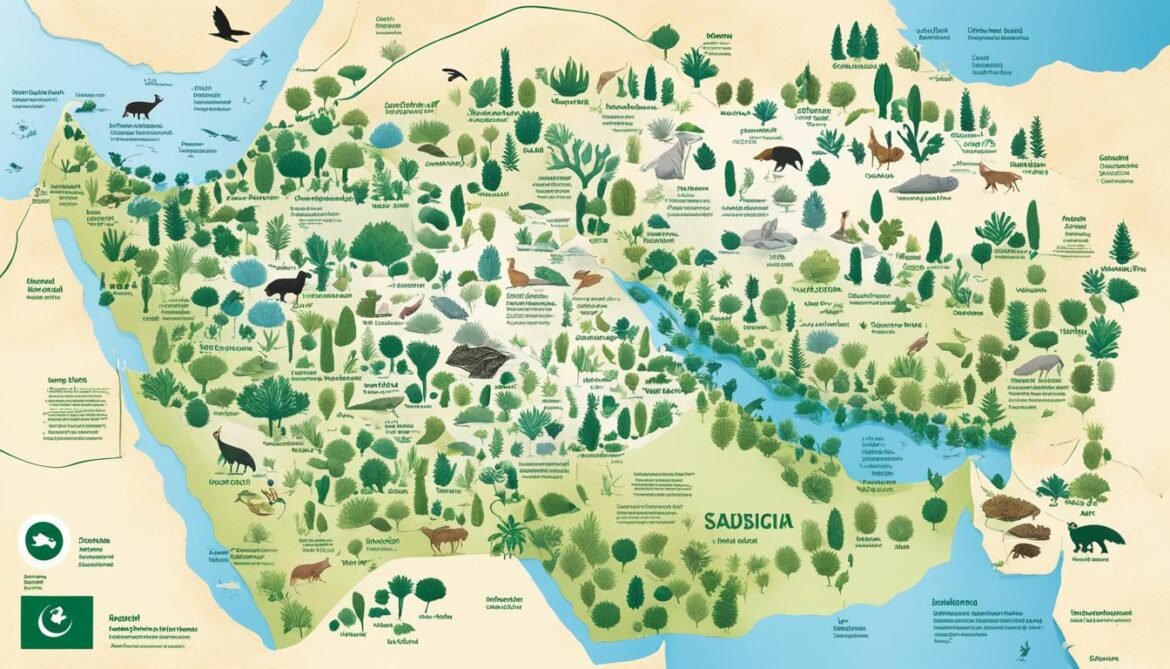
Conclusion
Saudi Arabia boasts a remarkable diversity of flora and fauna, positioning it as a vital hotspot for biodiversity. However, this precious natural heritage is facing numerous threats from human activities. Recognizing the significance of preserving its biodiversity, the country has undertaken significant efforts in the form of protected areas and the implementation of a National Biodiversity Strategy and Action Plan.
Continued dedication to conservation efforts and raising public awareness are crucial in safeguarding Saudi Arabia’s rich natural ecosystems for future generations. Each individual has the power to make a difference by actively participating in the conservation effort and contributing to the preservation of the country’s unique biodiversity.
Together, let’s join hands in cherishing and protecting the invaluable Saudi Arabia biodiversity. By doing so, we can ensure the longevity and sustainability of its natural heritage, creating a legacy that will be treasured for years to come.




